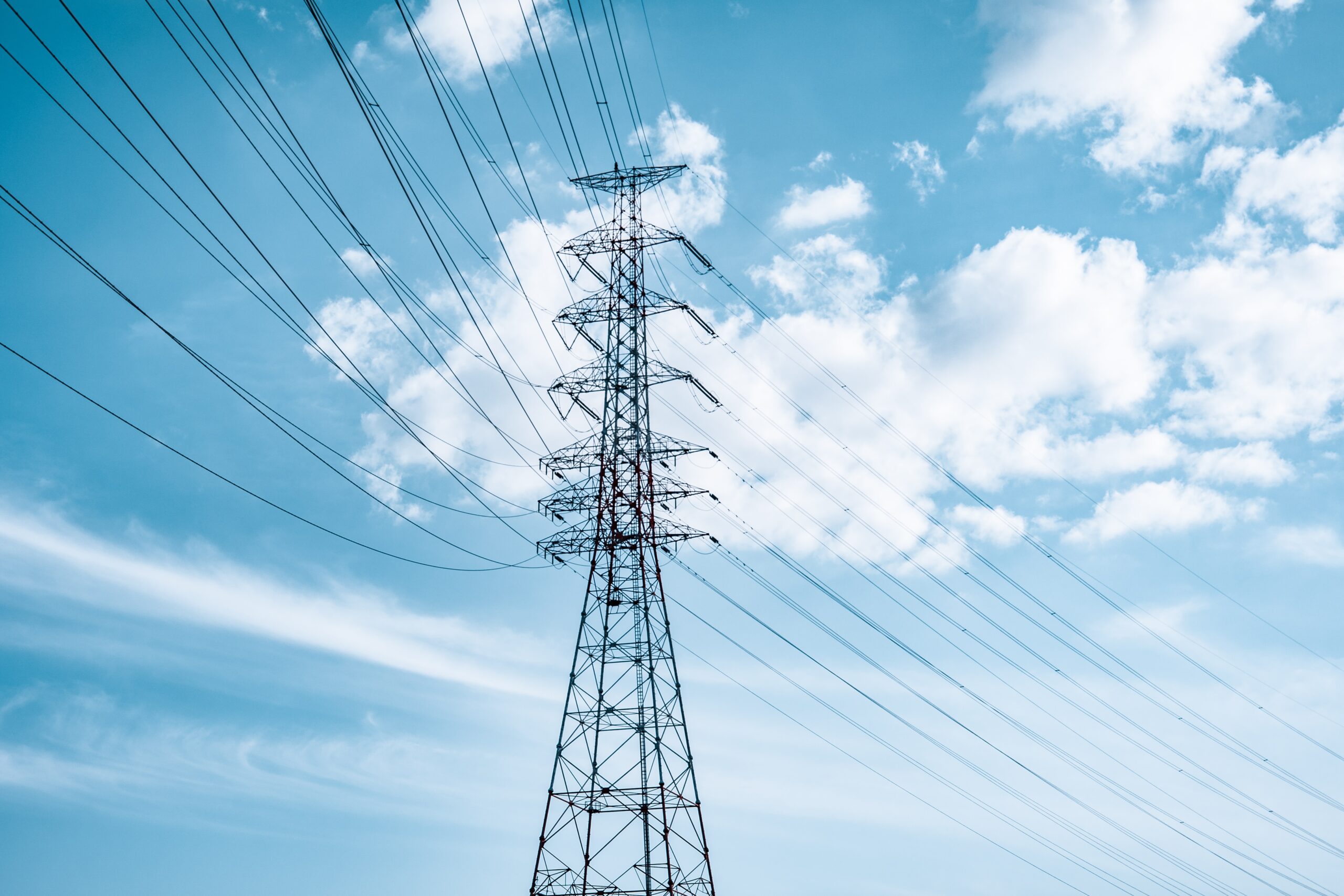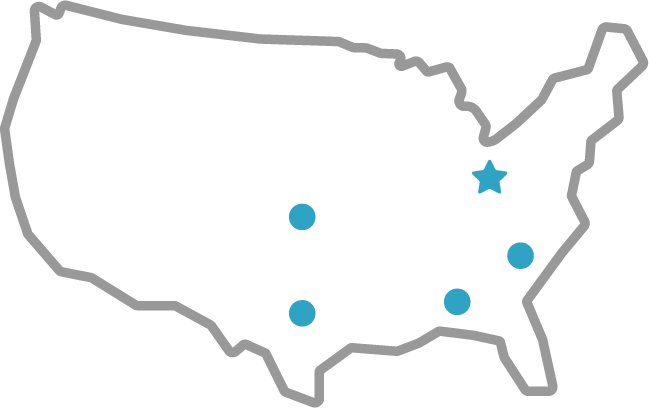JCL Journal
The US Electric Grid: America’s Heartbeat“The grid is awesomely complex. It is the largest machine in the world.” (Gretchen Bakke, The Grid: The Fraying Wires Between Americans and Our Energy Future)

Let’s play a guessing game, see if you can guess what I’m describing… You use it everyday in many ways. You rely on it, but don’t often think about it. When it stops working, it causes massive problems. If you guessed the U.S. Electric Grid, you were correct! Our Electric Grid is a vast and complex network, and we depend on it working so we can live our lives. However, in recent years changes to the environment have affected the grid in big ways. This week, the JCL Energy Journal is giving you an inside look at the U.S. Electric Grid and how it works.
A Brief History of the U.S. Electric Grid
To understand our current electric grid system, we need to understand how it was built. The first power plant in the U.S. opened in 1882. Thomas Edison designed the plant, which served only 59 customers at the start. Today, the U.S. Electric Grid serves hundreds of millions of Americans. A far cry from Edison’s one small power plant in New York, today it requires over 11,000 power plants to produce the energy we need. In the U.S. there are over 2 million miles of power lines running throughout the 3 major grid “areas” to power our daily lives.
How Does the U.S. Electric Grid Function?
Essentially, the Electric Grid is made of three main “pieces” that work together to make and distribute energy. The first piece is energy generation. Fossil fuels generate most of the electricity in the U.S., although there is a rise in renewable fuels. The second piece is transmitting the energy where it is needed. High rise power lines transmit high voltage electricity. The third piece is to transform and distribute the energy. High voltage electricity gets to a substation, where it passes through transformer units. Transformers ensure that the correct voltage is being distributed to homes and businesses.
At the beginning of the 20th century, more than 4000 separate utility providers across the country carried out the process independently. As demand grew, these independent utilities began to connect their systems. Eventually, 3 large grid systems formed. The Eastern Interconnection covers the area east of the Rockies and part of the Texas panhandle. The Western Interconnection covers the area west of the Rockies. ERCOT (The Electric Reliability Council of Texas) covers most of Texas. These three grid systems operate (mostly) independently of each other.
Who is in Charge Here?
With three separate grids, you may wonder who oversees energy distribution in the United States? How do we ensure that each independent grid system is “playing by the rules” (so to speak)? At the regional level, entities called “balancing authorities” exist for that reason. Balancing authorities are responsible for maintaining the balance between supply and demand.
At the National level, maintaining control over energy supply and distribution has always been highly coveted. At the beginning, utility companies had a monopoly of control over all parts of the process. Over the years, however, the government made moves to deregulate the energy industry, first with legislation in 1978, and again in 1992 with the Energy Policy Act. Essentially, deregulation meant that non-utility power providers could enter the market. This “broke” the monopoly. The legislation was meant to encourage competition, leading to lower energy prices overall.
Currently, the Department of Energy’s Federal Energy Regulatory Commission (FERC) has power authority over energy generation and distribution. Much of the day-to-day control over local distribution, however, is still in the hands of state and municipal governments.
The Rise of Renewable Energy
Authorities face the challenge of the increase of energy generated from non-renewable sources. It has become much more common and accessible for individuals to move away from the energy grid in favor of solar or wind energy sources. This is sometimes called “distributed production,” and it is causing the utility companies stress. Centralized energy production and distribution allow the utility companies to make money. As more people turn to distributed production, utility companies lose money.
In states where “net metering” occurs this is an especially big concern. First adopted by Minnesota in 1938, net metering requires the utility companies to buy back excess power from people using solar. To counter that cost, utility companies have to raise the prices for their customers. As more people turn to solar, the rates for “traditional” grid customers will continue to rise, sometimes called the “utility death spiral.” The U.S. is more dependent than ever on affordable, reliable energy. We could be facing an energy crisis beyond anything we’ve seen before in the near future, unless we overhaul the system.
Weather Events and their Effect on the U.S. Electric Grid
There is another reason for concern. Severe weather events are becoming ever more frequent. Climate change is disrupting normal weather patterns, which in turn is disrupting the grid. In February of 2021 the state of Texas suffered major power outages due to severe winter storms. The physical damage to the grid wasn’t the true culprit. Instead, the enormous increase in demand as people tried to heat their homes was too much for the grid to handle. The ERCOT was unable to handle the increased demand. Widespread blackouts left many without power.
In an interview with CNN, researcher Romany Webb (Columbia University’s Sabin Center for Climate Change Law) said, “The reality is the electricity system is old and a lot of the infrastructure was built before we started thinking about climate change. It’s not designed to withstand the impacts of climate change”. Clearly, continuing to base our grid system off historical weather patterns is no longer a viable option. Utility companies are looking into options such as buried electrical lines and fireproof above-ground poles. But all these changes cost money.
President Biden recently proposed putting in the investment to update the U.S. Electrical Grid. His 65 billion dollar proposal included into his bipartisan infrastructure law of November 2021 focused on grid modernization. But there was a catch. Part of the process of laying new transmission lines was adding renewable energy sources to the grid. Utility companies are pushing back against this because of potential profit losses. Unfortunately, this resistance at the state and local level could delay or even kill the initiative altogether.
The Future of the Grid
The standoff between the old and the new is ongoing when it comes to the U.S. Electric Grid. Utility companies are looking to protect their bottom line and their customers. Climate change and increasingly severe weather will continue to disrupt the grid if modernization does not occur. Caught in the middle are companies like JCL Energy, who support the infrastructure. Here at JCL Energy we believe in sustainability and efficiency, which is why we buy surplus transformers to recondition and resell. We also stay on top of our game as industrial transformer experts in an industry poised to change at the drop of a hat.
The electrical transformer is a crucial part of the U.S. Electric Grid, whether the energy is coming from fossil fuels or solar panels. We understand how to navigate the industry and the structure to get the right transformer in place for the right job. Our role is to make sure the power can get from the supply to you safely, reliably, and quickly. No matter how the grid changes over the coming decades, our dedication to serving our customers will always stay the same.
Sources
“Delivery to Consumers – U.S. Energy Information Administration (EIA).” U.S. Energy Information Administration (EIA), https://www.eia.gov/energyexplained/electricity/delivery-to-consumers.php . Accessed 12 July 2022.
Marsh, René. “Energy Experts Sound Alarm about US Electric Grid: ‘It’s Not Designed to Withstand the Impacts of Climate Change’ – CNN.” CNN, CNN, 31 May 2022, https://www.cnn.com/2022/05/31/us/power-outages-electric-grid-climate-change/index.html.
McBride, James, and Anshu Siripurapu. “How Does the U.S. Power Grid Work? | Council on Foreign Relations.” Council on Foreign Relations, https://www.cfr.org/backgrounder/how-does-us-power-grid-work . Accessed 12 July 2022.


